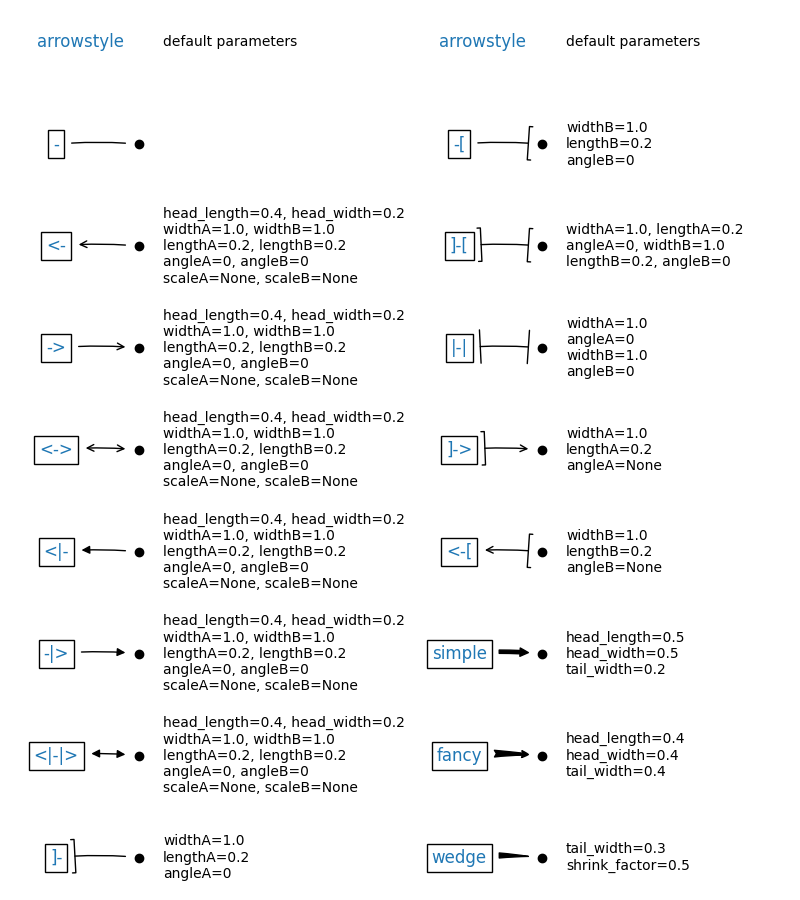Nota
Haga clic aquí para descargar el código de ejemplo completo
Referencia de estilo de flecha de anotación #
Descripción general de los estilos de flecha disponibles en annotate.
import inspect
import re
import itertools
import matplotlib.patches as mpatches
import matplotlib.pyplot as plt
styles = mpatches.ArrowStyle.get_styles()
ncol = 2
nrow = (len(styles) + 1) // ncol
axs = (plt.figure(figsize=(4 * ncol, 1 + nrow))
.add_gridspec(1 + nrow, ncol,
wspace=.7, left=.1, right=.9, bottom=0, top=1).subplots())
for ax in axs.flat:
ax.set_axis_off()
for ax in axs[0, :]:
ax.text(0, .5, "arrowstyle",
transform=ax.transAxes, size="large", color="tab:blue",
horizontalalignment="center", verticalalignment="center")
ax.text(.35, .5, "default parameters",
transform=ax.transAxes,
horizontalalignment="left", verticalalignment="center")
for ax, (stylename, stylecls) in zip(axs[1:, :].T.flat, styles.items()):
l, = ax.plot(.25, .5, "ok", transform=ax.transAxes)
ax.annotate(stylename, (.25, .5), (-0.1, .5),
xycoords="axes fraction", textcoords="axes fraction",
size="large", color="tab:blue",
horizontalalignment="center", verticalalignment="center",
arrowprops=dict(
arrowstyle=stylename, connectionstyle="arc3,rad=-0.05",
color="k", shrinkA=5, shrinkB=5, patchB=l,
),
bbox=dict(boxstyle="square", fc="w"))
# wrap at every nth comma (n = 1 or 2, depending on text length)
s = str(inspect.signature(stylecls))[1:-1]
n = 2 if s.count(',') > 3 else 1
ax.text(.35, .5,
re.sub(', ', lambda m, c=itertools.count(1): m.group()
if next(c) % n else '\n', s),
transform=ax.transAxes,
horizontalalignment="left", verticalalignment="center")
plt.show()

Referencias
En este ejemplo se muestra el uso de las siguientes funciones, métodos, clases y módulos:
matplotlib.patches.ArrowStyle.get_styles
Tiempo total de ejecución del script: (0 minutos 1.347 segundos)